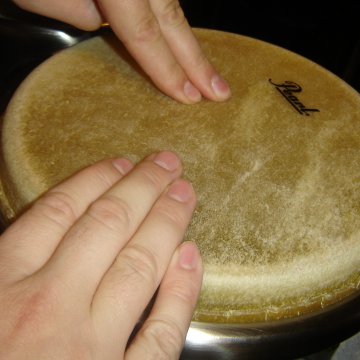Learn To Play Bongo Drums
Contents
(Bongo Tones)
There are a few basic tones you need to master in order to learn to play bongo drums. All rhythms and patterns use three basic tones with minor variations that can produce various dynamics within each tone. I’ll cover them here and show you how to position your hand on the head. When you’re done, be sure to watch the video at the end in order to hear how each tone sounds.
Open
The open sound is produced by hitting the edge of the drums with your fingers. Hit the head using the space from about your second knuckle line to your fingertips. You also want to be sure not to let your fingers rest on the head. Let them bounce off, or rebound, after the strike. Don’t use your pinky finger and try to leave a little open space between your fingers.
Closed/Muff
This tone is produced pretty much the same way as the open tone is. You want to use the same surface area (2nd knuckle line to tips), but this time keep your fingers closed tightly together and do not let them rebound. This traps air and somewhat muffles the sound producing a different tone.
Slap

This sound is produced by hitting the bongo drums with a slightly cupped hand, using only the fingertips. Be sure to keep the palm of your hand on the edge of the drum and maintain contact with the shell as you strike with your fingertips. There are two variations of the slap. One “open” with rebounding fingers and the other “closed” with no rebound.
Muted Tones

You can create variations in pitch by increasing the tension of the bongo heads. You can do this by either pressing down harder or softer on the head, or by increasing/decreasing the distance between the muting hand and your striking hand. You can either use your thumb or fingers to mute.
This video will show you the three main tones and lets you hear how you can mute the tones to produce dynamics within sound.




New! Comments
Leave your comments below.